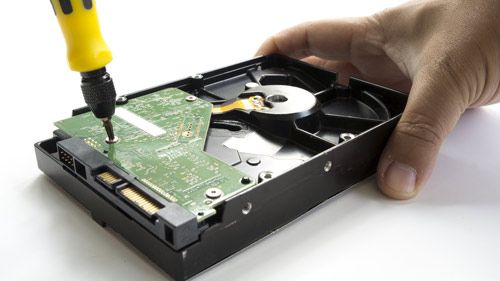Data recovery from an external drive
External drives for years are present in the computer sets of professionals and normal users. The growing memory available on these devices allows you to create large archives, which may include the resources from years of our work on the computer.
External hard drives have been present in the computer equipment of professionals and normal users for years. The increasing amount of memory available on these devices allows for the creation of large archives, which may include the resources from many years of our work on the computer. However, these increasingly sophisticated devices are not exempt from the danger of damage – whether mechanical, electrical or logical – and hence the loss of data stored on them. Data recovery from external drives is a topic worth devoting a few sentences to.
The function of external drives
It is the archiving of computer data that seems to be the primary function of these very popular devices. While the so-called.While USB flash drives often, perhaps even most often, serve to transfer data in a convenient form, while the information itself is erased after being written to the target machine, external drives are designed to store selected information. Storing files of our choice on an external drive may also entail a second function – backup copies. Important information stored only on the disk of a desktop or laptop are vulnerable to destruction – either by failure of the machine itself or a hacker attack. Therefore, one of the basic rules of security is to create backups. Here, external drives ideally serve as platforms where such copies can be stored – without the use of cloud technology.
Types of external drives. Susceptibility to data loss by types of drives
There are two basic types of external drives on the market – HDD (Hard Disk Drive) and SSD (Solid-State Disk). HDD is actually the same drive as those in laptops and desktop computers. The data on these devices is stored on magnetic media. This implies the risks associated with mechanical damage (there is for example.This approach is based on the analysis of the patient’s behavior and thoughts in everyday life, as the therapist tries to change the patient’s erroneous beliefs and develop new ones. SSD, in turn, is simply a large flash drive. Information is stored in electronic circuits. In the case of such external drives the construction is more compact, there are no certain mechanical risks, because there are no elements the same or similar to the HDD – which could be subject to such damage. Of course, the electronic circuitry in an SSD may simply fail.
Data recovery from external drives
Data can be lost from disks through mechanical, electrical and logical (IT) damage. External drives are exposed to impacts, shocks – because they are often moved. It should be emphasized that what we are really talking about is the lack of access to data, not its loss. If they were lost there would be no way to recover them.The recovery process consists of two stages: analysis and data recovery. The analysis has to answer what is the reason for lack of access to files and what are the possibilities of regaining this access. Data recovery from an external drive is already a direct operation to restore access to resources. The type of these actions depends on the cause of the so-called “data loss”.
Important note: if you are not a specialist in data recovery and you do not have access to important information previously saved on the drive – contact a specialist with the problem. Lack of knowledge and experience may cause irretrievable loss of files.

